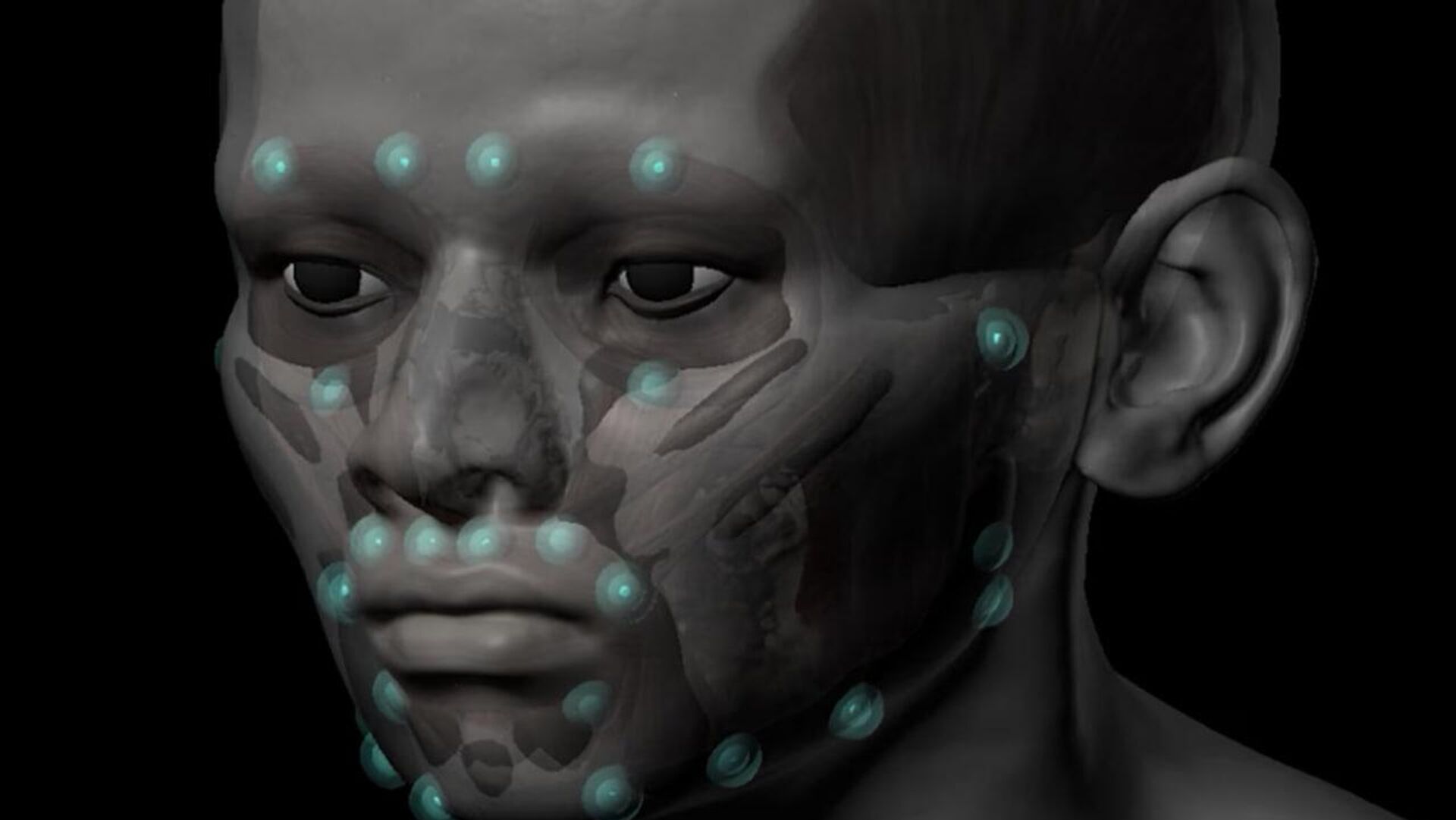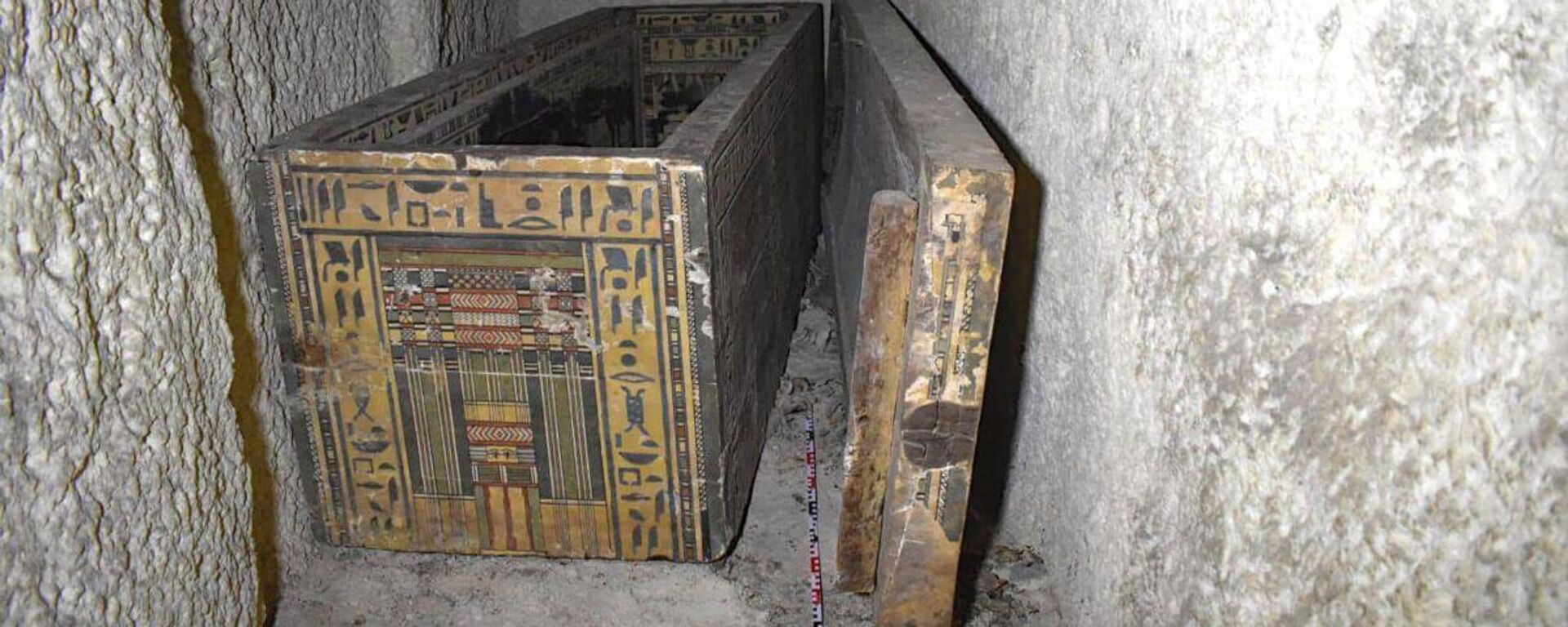https://en.sputniknews.africa/20241026/rediscovering-ta-kr-hb-face-of-ancient-kushite-princess-brought-to-life-1068899586.html
Rediscovering Ta-Kr-Hb: Face of Ancient Kushite Princess Brought to Life
Rediscovering Ta-Kr-Hb: Face of Ancient Kushite Princess Brought to Life
Sputnik Africa
The Kushite Empire, one of the most powerful of its time, ruled over Upper Egypt during the 25th and 26th Dynasties, likely counted Ta-Kr-Hb as a member of its... 26.10.2024, Sputnik Africa
2024-10-26T19:02+0200
2024-10-26T19:02+0200
2024-10-26T19:13+0200
ancient egypt
sudan
history
museums
north africa
science
digital technology
archeology
research
https://cdn1.img.sputniknews.africa/img/07e8/0a/1a/1068899897_0:0:1280:721_1920x0_80_0_0_2358ab1e4d27ae82cfd9301c91b859c8.jpg
The face of an ancient woman, likely from the Nubian kingdom of Kush, has been digitally reconstructed from a 2,500-year-old sarcophagus housed at Perth Museum since 1936.The digital reconstruction, led by Dr. Chris Rynn, a craniofacial anthropologist and forensic artist, sheds light on the unique facial structure of the mummified woman, identified through hieroglyphs as “Ta-Kr-Hb” or “Takerheb.” Rynn explained that her skull shape deviates from typical Kemetic (ancient Egyptian) features, suggesting she was from the Kushite kingdom, located in what is now Sudan.Dr. Mark Hall, the museum’s collections officer, highlighted the historical significance of her background.Rynn’s analysis also uncovered that her facial reconstruction differs from the sarcophagus’s painted exterior, featuring a long face and a narrow nose. He explored the idea of how unusual it might be for the sarcophagus not to resemble the person inside, and found out it was quite common. However, the inside of the lid displayed a painting of a woman with much darker skin, the article read.Rynn also noted that Kushite priestesses and priests would have shaved their heads for ceremonial and hygienic purposes; thus, the reconstruction presents her as bald, though she may have worn a ceremonial wig.The reconstruction adds a powerful human connection to Ta-Kr-Hb’s story.
https://en.sputniknews.africa/20241006/archaeologists-uncover-ancient-egyptian-tomb-with-intricately-painted-coffins-1068565460.html
ancient egypt
sudan
north africa
Sputnik Africa
feedback@sputniknews.com
+74956456601
MIA „Rossiya Segodnya“
2024
Christina Glazkova
https://cdn1.img.sputniknews.africa/img/07e7/0b/07/1063380906_0:0:673:674_100x100_80_0_0_79628b4d0cd9f29291a57aa13bbf9e7a.jpg
Christina Glazkova
https://cdn1.img.sputniknews.africa/img/07e7/0b/07/1063380906_0:0:673:674_100x100_80_0_0_79628b4d0cd9f29291a57aa13bbf9e7a.jpg
News
en_EN
Sputnik Africa
feedback@sputniknews.com
+74956456601
MIA „Rossiya Segodnya“
Sputnik Africa
feedback@sputniknews.com
+74956456601
MIA „Rossiya Segodnya“
Christina Glazkova
https://cdn1.img.sputniknews.africa/img/07e7/0b/07/1063380906_0:0:673:674_100x100_80_0_0_79628b4d0cd9f29291a57aa13bbf9e7a.jpg
ancient egypt, sudan, history, museums, north africa, science, digital technology , archeology, research
ancient egypt, sudan, history, museums, north africa, science, digital technology , archeology, research
Rediscovering Ta-Kr-Hb: Face of Ancient Kushite Princess Brought to Life
19:02 26.10.2024 (Updated: 19:13 26.10.2024) Christina Glazkova
Writer / Editor
The Kushite Empire, one of the most powerful of its time, ruled over Upper Egypt during the 25th and 26th Dynasties, likely counted Ta-Kr-Hb as a member of its elite. Hieroglyphic markings indicate she was possibly a priestess or princess, and that she passed away in her thirties.
The face of an ancient woman, likely from the Nubian kingdom of Kush, has been digitally reconstructed from a 2,500-year-old sarcophagus housed at Perth
Museum since 1936.
The digital reconstruction, led by Dr. Chris Rynn, a craniofacial anthropologist and forensic artist, sheds light on the unique facial structure of the mummified woman, identified through hieroglyphs as “Ta-Kr-Hb” or “Takerheb.” Rynn explained that her skull shape deviates from typical Kemetic (ancient Egyptian) features, suggesting she was from the Kushite kingdom, located in what is now Sudan.
“The skull shape doesn’t look like any of the ancient Egyptians that I’ve seen before,” he told the British media. “Kemetic skulls normally have narrow, long craniums… more prominent narrow noses and longer faces.”
Dr. Mark Hall, the museum’s collections officer, highlighted the historical significance of her background.
“At this particular time, 2,500 years ago, that’s when the Kushite empire conquered Egypt. You get a whole sequence of black, Kushite pharaohs,” he reportedly explained.
Rynn’s analysis also uncovered that her facial reconstruction differs from the sarcophagus’s painted exterior, featuring a long face and a narrow nose. He explored the idea of how unusual it might be for the
sarcophagus not to resemble the person inside, and found out it was quite common. However, the inside of the lid displayed a painting of a woman with much darker skin, the article read.
Rynn also noted that Kushite priestesses and
priests would have shaved their heads for ceremonial and hygienic purposes; thus, the reconstruction presents her as bald, though she may have worn a ceremonial wig.
The reconstruction adds a powerful human connection to Ta-Kr-Hb’s story.
“We hope it gives visitors the feeling that here’s someone you can readily relate to as another human being,” Hall expressed his excitement.



